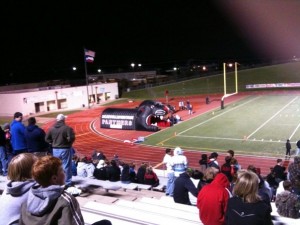One of Mom’s and my favorite tennis players, Las Vegas native Andre Agassi, has written an autobiography called Open, due in stores Nov 9. I grew up watching Agassi. I wore his shoes. I liked him with long hair. I liked him bald. Mom and I flew up to New York in 2006 to see his final US Open. So when we heard he was writing a book, we knew we had to read it.
As you might have read, the media buzz around the book has begun. Much of the buzz, and certainly the headlines, focus on one fact: in the book Agassi admits to using crystal meth in the late 1990s, around the time he won his only French Open. After failing a drug test, he lied about it to the tennis officials and cleared his record. Am I disappointed that a man I greatly admire both used illegal drugs and lied about it? Sure. But I’m much more disappointed in the media, and in ourselves as consumers of media, for choosing to obsess yet again over celebrity dirt. It’s not that we expect our celebrities to be perfect, because I don’t think we do. It’s that we relish the mistakes they make, talk about them, embellish them, print and share photos of them. Their mistakes sell magazines and newspapers. Their mistakes boost online ad revenue. Their mistakes make us feel smugly better about ourselves.
Finally I found an actual excerpt from the book on CNNSI.com. Yes, it includes a passage about the meth usage but also gives some of its context. To me, far more interesting is the fact that one of the greatest tennis players in history claims that he hated the game – not just at the end, when his weary body was breaking down, but from the very beginning, when his hot-tempered, demanding father forced him to start playing and refused to let him stop short of perfection. Open appears to be a surprisingly well-written, engaging, sad, and thought-provoking look at the real man behind the crazy hair and pink-and-black shoes, the little boy who could not lose because his father wouldn’t let him.

